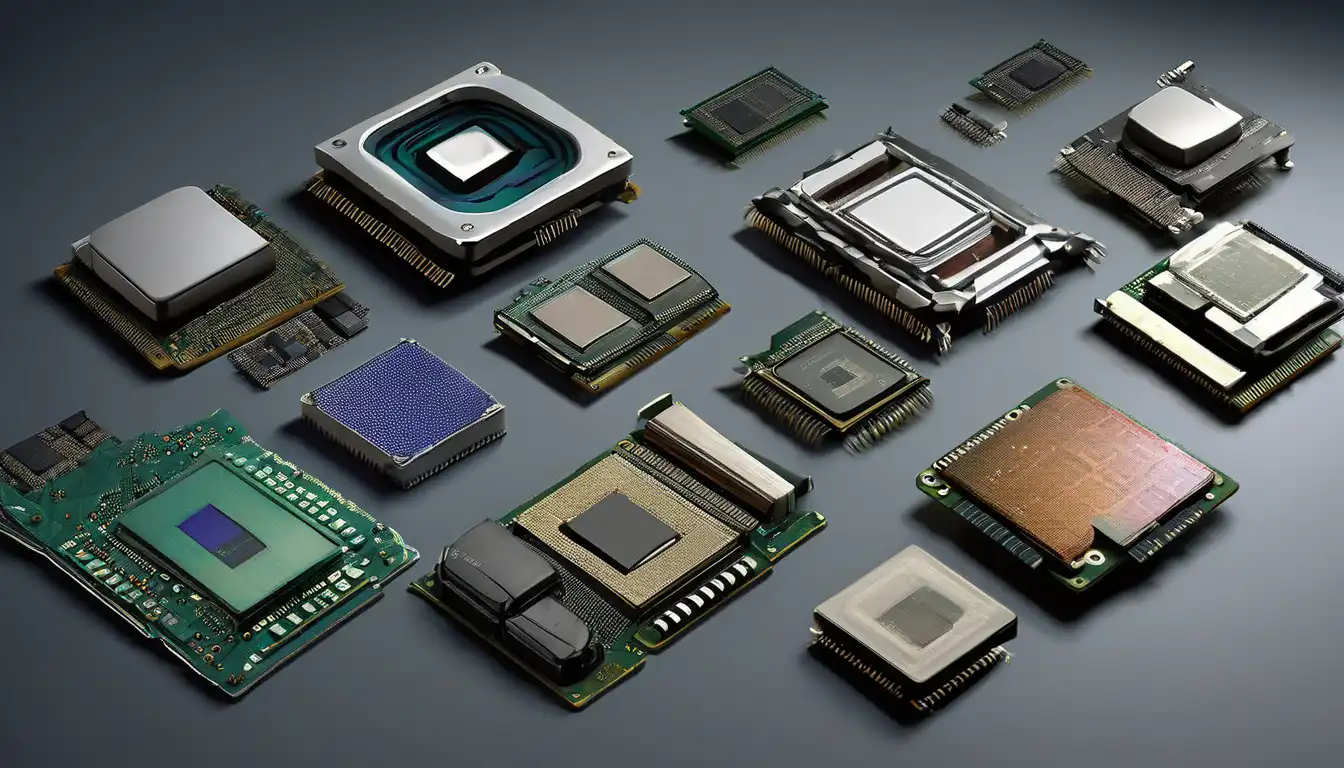The Dawn of Computing: Early Processor Technologies
The evolution of computer processors represents one of the most remarkable technological journeys in human history. Beginning with primitive vacuum tube systems in the 1940s, processors have undergone revolutionary changes that have fundamentally transformed how we live, work, and communicate. The first electronic computers, such as ENIAC, utilized thousands of vacuum tubes that consumed enormous amounts of power and required constant maintenance. These early processors operated at speeds measured in kilohertz and occupied entire rooms, yet they laid the foundation for the digital revolution that would follow.
The Transistor Revolution: 1950s-1960s
The invention of the transistor in 1947 marked a pivotal moment in processor evolution. By replacing bulky vacuum tubes with smaller, more reliable semiconductor devices, computers became more practical and accessible. The 1950s saw the development of transistor-based computers that were significantly smaller, more energy-efficient, and more reliable than their vacuum tube predecessors. This era also witnessed the creation of the first integrated circuits, which combined multiple transistors on a single silicon chip. The transition from discrete transistors to integrated circuits paved the way for the microprocessor revolution that would transform computing forever.
Key Milestones in Transistor Development
- 1947: Invention of the point-contact transistor
- 1954: First silicon transistor developed
- 1958: Jack Kilby creates the first integrated circuit
- 1960: MOSFET transistor invented, enabling modern processor design
The Microprocessor Era: 1970s-1980s
The 1970s ushered in the age of the microprocessor, beginning with Intel's 4004 processor in 1971. This revolutionary chip contained 2,300 transistors and operated at 740 kHz, yet it established the blueprint for modern processors. The subsequent decades saw exponential growth in processing power, following what would become known as Moore's Law. The 8-bit processors of the late 1970s, such as the Intel 8080 and Zilog Z80, powered the first personal computers and laid the groundwork for the PC revolution. The transition to 16-bit architecture in the early 1980s, exemplified by the Intel 8086, brought significant performance improvements and established the x86 architecture that remains dominant today.
Notable Microprocessor Breakthroughs
- 1971: Intel 4004 - first commercial microprocessor
- 1974: Intel 8080 - foundation of early personal computing
- 1978: Intel 8086 - establishes x86 architecture
- 1985: Intel 80386 - first 32-bit x86 processor
The Performance Race: 1990s-2000s
The 1990s witnessed an intense competition between processor manufacturers, driving unprecedented innovation and performance gains. The introduction of RISC (Reduced Instruction Set Computing) architectures challenged traditional CISC designs, while clock speeds escalated from tens of megahertz to multiple gigahertz. This era saw the emergence of superscalar architectures, out-of-order execution, and sophisticated caching strategies that dramatically improved processor efficiency. The Pentium processor family dominated the market, while competitors like AMD introduced innovative alternatives that pushed the industry forward. The late 1990s also saw the introduction of multi-core processors, marking a fundamental shift in processor design philosophy.
Modern Processor Architecture: 2000s-Present
The 21st century has brought about revolutionary changes in processor design, driven by the challenges of power consumption, heat dissipation, and the limits of traditional scaling. The industry transitioned from focusing solely on clock speed improvements to optimizing for performance-per-watt and parallel processing capabilities. Modern processors incorporate multiple cores, sophisticated power management features, and advanced instruction sets optimized for specific workloads. The rise of mobile computing has driven the development of energy-efficient ARM architecture processors, while server processors have evolved to handle massive parallel workloads in data centers and cloud computing environments.
Contemporary Processor Innovations
- Multi-core processing for parallel task execution
- Advanced power management and thermal control
- Integrated graphics processing units (GPUs)
- Specialized AI and machine learning accelerators
- Heterogeneous computing architectures
The Future of Processor Technology
As we look toward the future, processor evolution continues at an accelerating pace. Quantum computing represents a potential paradigm shift, offering exponential performance gains for specific types of problems. Neuromorphic computing, inspired by the human brain, promises more efficient processing for artificial intelligence applications. Advances in materials science, including graphene and other two-dimensional materials, may enable continued scaling beyond the limits of traditional silicon. The integration of photonic components could revolutionize data transfer within processors, while 3D stacking technologies promise to increase transistor density without traditional scaling challenges.
Impact on Society and Technology
The evolution of computer processors has fundamentally transformed nearly every aspect of modern society. From enabling the internet revolution to powering smartphones, from driving scientific research to transforming entertainment, processors have become the invisible engines of our digital world. The continuous improvement in processing power has made possible technologies that were once science fiction, including real-time language translation, autonomous vehicles, and sophisticated medical imaging systems. As processor technology continues to advance, we can expect even more profound changes in how we interact with technology and each other.
The journey from vacuum tubes to modern multi-core processors demonstrates humanity's remarkable capacity for innovation. Each generation of processors has built upon the achievements of its predecessors while overcoming new challenges and limitations. As we stand on the brink of new computing paradigms, the evolution of processors remains one of the most exciting and transformative stories in technological history. The future promises even more remarkable advances that will continue to reshape our world in ways we can only begin to imagine.
